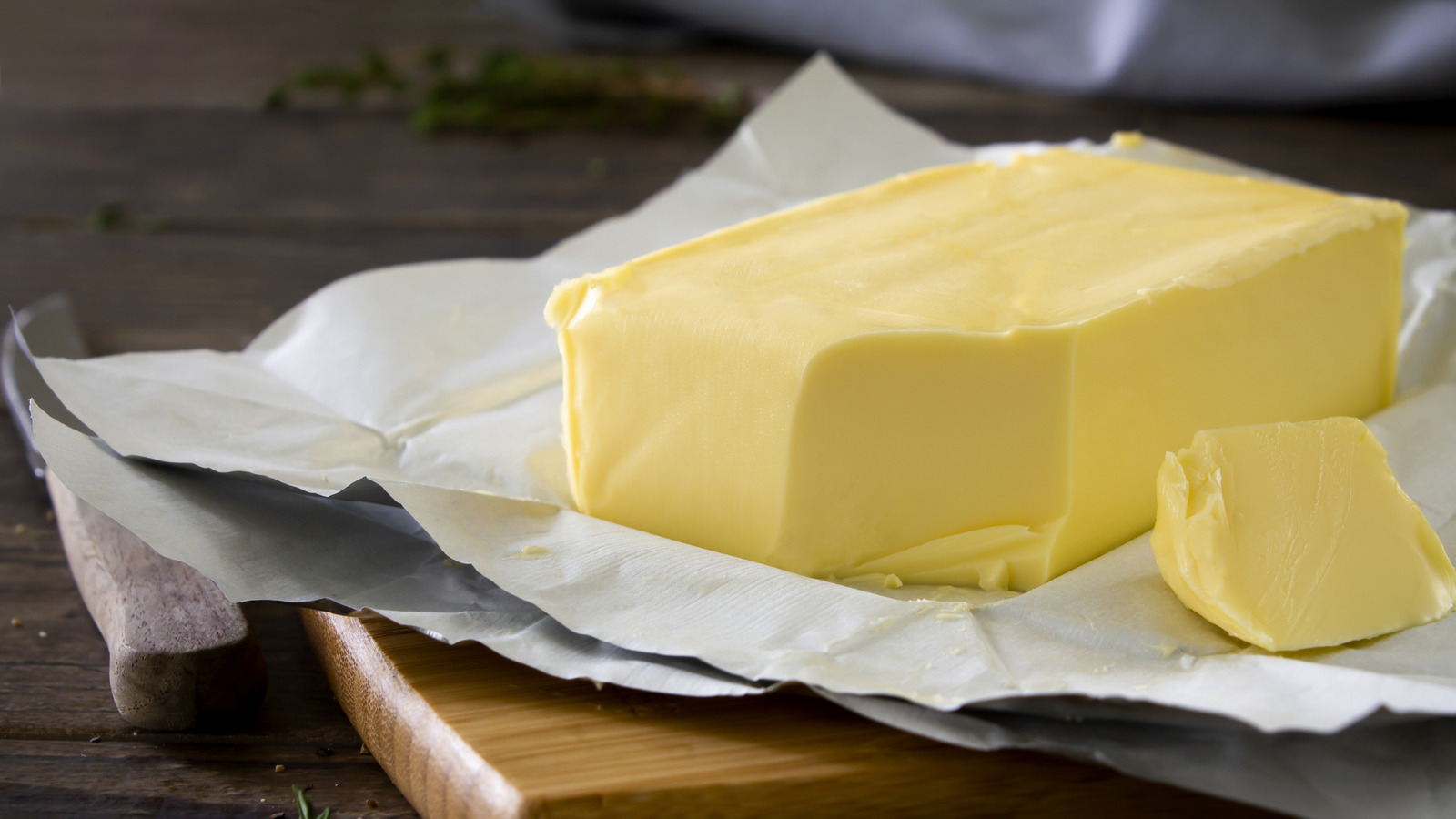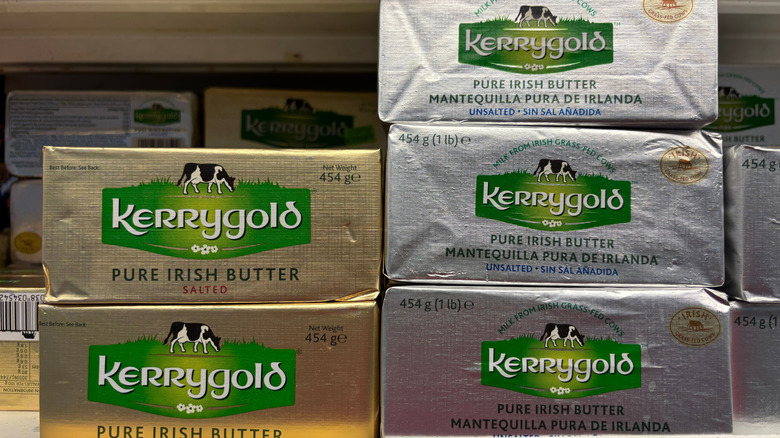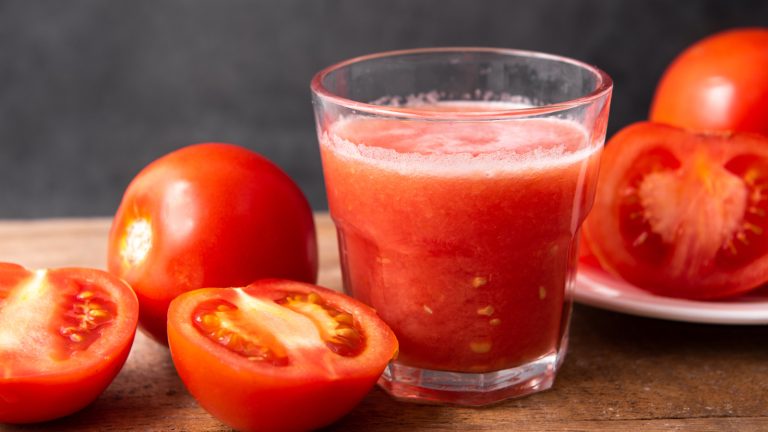Whether you’re creating one of many creamy butter sauces or whipping up a rich, herby topping for proteins and veggies like Ina Garten, high-quality butter is the key to success. There are plenty of reasons to consider churning your own, but when time is of the essence, buying it at the store makes the most sense. Of course, you don’t want to wind up tossing one of the worst butters on the shelves into your cart, which can give you less than delicious results. If you really want your baked goods and meals to shine, you’ll want to opt for what Food Republic’s taster deemed the top store-bought brand that you can find in many U.S. grocery stores — Kerrygold.
Kerrygold butter feels fancy from the start — its golden wrapper exudes butter royalty vibes. But you can’t just judge a butter by its cover — err, wrapper; it’s what’s inside that counts. And what’s inside, after you peel away that shiny foil, is a block of Irish golden goodness crafted with milk from grass-fed cows. The salted version sports a butterfat content of 80%, which is in line with many American butters, but the unsalted variety clocks in at 82%, landing it within European qualifications for butter. Unlike many other brands, you can effortlessly spread it straight out of the fridge, but it’s also ideal for creating the perfect crumb in cakes and breads, crafting flaky croissants, or melting into savory dishes.
Why high quality butter matters
With so many options on the shelves, it may be easy to cut corners and just opt for the most budget-friendly brand of butter. However, you’re likely doing your dishes a disservice if you do. First, well-made butter that comes from grass-fed cows and uses cultured milk, like Kerrygold, has superior texture and flavor over its lesser-quality counterparts. That means that even something as simple as your morning toast or scrambled eggs can be significantly more satisfying.
The higher butterfat content is an important component, too. Butters that contain more moisture are less likely to create the richness in sauces or add the same level of unctuousness when used to top meats and vegetables. One caveat, though, is that bakers may need to adjust a recipe if they’re incorporating more butterfat — just use a little less butter.
Finally, one of the simplest but most convenient reasons to opt for quality butter with a high butterfat content is the ease with which it comes to room temperature. It does so more quickly than other varieties with less butterfat, so you’re able to dive right into your cooking or baking project. Plus, it also keeps its original form better, leaving you with a significantly more attractive presentation for your brunch spread or dinner party.






